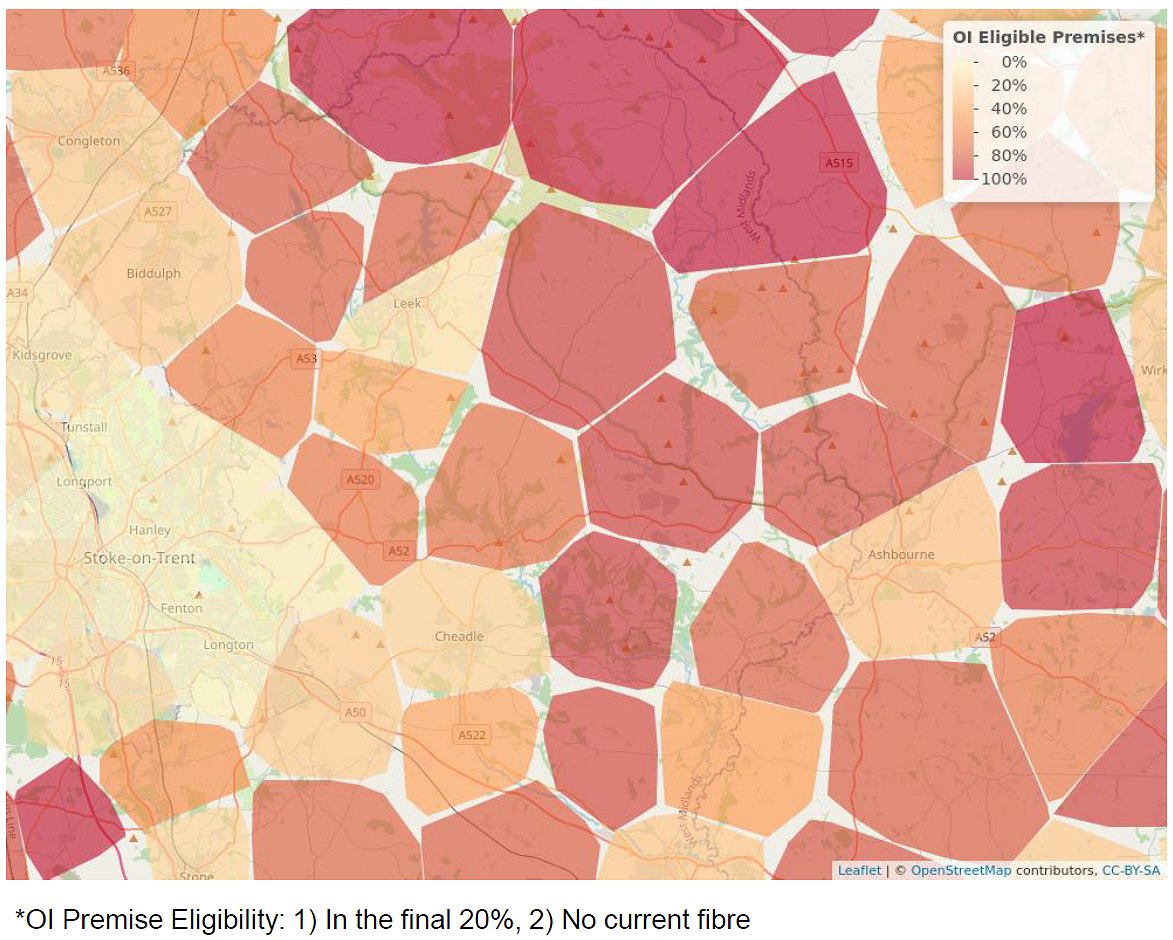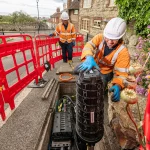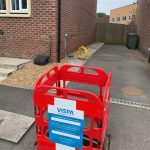Government Start £5bn UK Gigabit Broadband Plan for 85%+ by 2025 UPDATE

The Chancellor, Rishi Sunak, has today published his 2020 Spending Review and in so doing has kicked off the new £5bn UK Gigabit Broadband Programme, which previously aimed to ensure that “every home” could access a 1Gbps capable connection by the end of 2025 but now expects a “minimum” of 85% coverage by that date.
The Chancellor’s speech itself merely talked about a plan to “deliver faster broadband for over 5 million premises across the UK“, although the published announcement confirms that they’ve today allocated £1.2bn (between 2021-22 to 2024-25) from the programme’s £5bn budget to “subsidise the rollout of gigabit-capable broadband … to the hardest-to-reach areas” (more funding will be allocated over the next 4 years).

Interestingly, the investment is expressed in the documentation as being for the “first 4 years of the £5 billion Gigabit Broadband programme,” which may perhaps be taken as a quiet admission that – to nobody’s great surprise – it will take longer than the original 2025 target to complete.
Advertisement
However, today also saw the much delayed National Infrastructure Strategy (NIS) being published, which finally gives us some clarity on their coverage targets.
NIS Statement on the Gigabit Rollout Plan
“The government is working with industry to target a minimum of 85% gigabit capable coverage by 2025, but will seek to accelerate roll-out further to get as close to 100% as possible. The government will continue to implement an ambitious programme of work to remove barriers to broadband deployment and maximise coverage in the hardest to reach areas of the country.”
At present it’s often predicted that commercial deployments of gigabit-capable fixed broadband networks alone will push coverage to over 70% of premises by the end of 2025 (some expect c.80%), although a lack of clarity over key issues – such as overbuild between rivals, a shortage of skilled engineers, post-2020 state aid rules (Brexit negotiations) and uncertainty over long-term rollout plans – make it difficult to be certain.
We should point out that most of the commercial coverage will be achieved by the end of 2021 and flows from Virgin Media’s on-going upgrade to DOCSIS 3.1 technology, which alone extends gigabit speeds to c.16 million UK premises (55-60%). The rest will come from FTTP deployments by Openreach (BT), Cityfibre, KCOM, Hyperoptic and a mass of other alternative networks (summary), albeit with a fair bit of overbuild in urban areas.
Meanwhile the Government’s new UK Gigabit Programme, which was first announced last year with £5bn of public funding attached (here), is focused on trying to identify and tackle the final 20% (aka – F20) of hardest to reach locations – up to c.6 million premises – using an an “outside-in” approach to deployment (i.e. build out from rural areas first, rather than leaving them until last).
Advertisement
Despite this it’s worth noting how the Government have already warned (here) that it considers the “final 1%” of premises “could be prohibitively expensive to reach” via even their gigabit programme (i.e. the same sort of area that their 10Mbps USO was supposed to help – this has suffered problems).
The UK Gigabit Broadband Programme (F20)
Sadly, none of today’s new documents provide much detail on how the new gigabit programme will actually work, but luckily we already have a very good idea from talking to the industry and have summarised that below.
The Building Digital UK (BDUK) team appear to be taking a more centrally than locally managed approach to the gigabit scheme in England, although there will be dedicated regional teams and local area leads assigned across different parts of the country and they will all report to the UK Gigabit Programme Director.
The expectation is that devolved nations (Scotland, Wales and N.Ireland) will be handled differently, but a final decision on that has yet to be made. The UK government will no doubt want to get equal recognition for their role and the funding, which hasn’t always happened in the past (politics).
Advertisement
Some priority in this will also be given to tackling those in the final c.3-4% of UK premises who still can’t access 30Mbps+ speeds, but there is a balance to be struck. If BDUK focused exclusively on non-superfast areas the rollout would be slow because you’d increasingly get into the very hard to connect premises, so the intention is to do a healthy mix of both (i.e. prioritise non-superfast areas, but not to the exclusion of all else).
The new programme has also – for better or worse – scrapped former PM Theresa May’s singular focus on delivering universal coverage via “full fibre” in favour of a more technology neutral approach, which allows gigabit-capable connections to be achieved via other methods like FTTP, Hybrid Fibre Coax (DOCSIS 3.1), Fixed Wireless Access (FWA) or 5G mobile networks. But we should add that the tech specs have yet to be finalised.
Otherwise the broad approach that BDUK intends to take somewhat mixes elements from their previous Superfast Broadband (SFBB), Local Full Fibre Networks (LFFN) and Rural Gigabit Connectivity (RGC) programmes, albeit with additional funding and a different strategy for implementation. Most of today’s focus will be on no.3 below.
BDUK’s F20 Model
1. General Demand Side Interventions
Providing fibre to public sector sites / buildings, which can later also be harnessed by network providers to reach other nearby properties. This also feeds into no.2 below because vouchers are another type of demand side intervention.
2. Voucher Scheme for Premises
Effectively a continuation of the current RGC programme that is due to end in March 2021, albeit with much more funding and hopefully bigger vouchers. Such vouchers will also become available to a moderately wider area than the original RGC scheme, albeit still based around that F20 focus. A new website will make access to these even easier (e.g. the consumer led pilot, but that won’t launch until the New Year).
3. Direct Supply Side Intervention
This will gobble up most of the funding – we think about £3-4bn of the total – and on the surface will be similar to the original gap funded BDUK model, including the usual state aid approval and open procurement requirements. Suppliers will thus bid on contracts to deploy gigabit broadband in areas where the market has failed to do so itself, but the detail of how this works is different.
Arguably the biggest change here can be found under no.3, which adopts a bundle strategy that splits areas up into multiple clusters of several thousand premises each for procurement (excluding any areas where future upgrades are already planned).
At the last update we saw, each cluster or bundle was predicted to have an average size of around 3,000 premises (each one of these becomes a LOT to be bid on by suppliers) and an average public subsidy of around £1,000 per premise passed. Being an average, some clusters may be a lot bigger or smaller than this.
The structure of these smaller clusters signals a clear desire to help foster smaller alternative networks (AltNets) in the bidding process, since larger operators (Openreach etc.) tend to favour bigger bundles (clusters) to ensure economies of scale and longer-term contracts. Discussions around bundle sizes are said to be on-going, but we expect to see large, medium and small bundles in different parts of the UK.
Admittedly there are some other complexities to how this is all defined, which we’re still learning about, but all of the related contracts should be based around a model of delivery that ideally takes 2-3 years to complete (note: the bundles will base their cost of delivery off multiple different models).
Example of Possible Bundles in Staffordshire (Moorlands)

The next thing to consider here is how much broadband speed these contracts will actually deliver. Long-time readers might remember that the original SFBB programme often had some caveats in the small print, which were necessary to cater for the reality of network provision (i.e. capacity is always shared on residential services to favour affordability and because we aren’t all using 100% of our max speeds 24/7).
Lest we forget that many physical limitations (1Gbps router ports that only do c.970Mbps, slow WiFi, network congestion etc.), and restrictions on the performance of remote online servers, mean that even the best 1Gbps connections today often can’t take full advantage of such speeds.
The new Gigabit Programme is no exception to such issues and the documents released in July 2020 revealed that BDUK appeared likely to require a “normally available” download speed of at least 500Mbps and uploads of 200Mbps, which in “limited circumstances” may fall to at least 50Mbps download and 20Mbps upload (here). As stated earlier, the tech specs for all this have yet to be finalised, so these figures may change.
In reality, we don’t imagine those in rural areas will have any big gripes about an expectation of 500Mbps and this also doesn’t prevent an ISP from offering slower, cheaper or even faster plans on the same network (saying 500Mbps is more about defining real-world capability). Nevertheless, some people may be confused by anything that seems like a dilution “gigabit-capable.”
A Question of Delivery
Finally, we come to the question of delivery time-scales. A new Dynamic Purchasing System (DPS) is expected to help handle the programme and the first suppliers (e.g. BT, Cityfibre etc.) could be accepted onto this in early 2021 (spring), although it will be late 2021 before the first contracts are signed as part of that procurement. The build phase thus seems likely to take place between around the end of 2021 and late 2025.
The above assumes no delays and, much as we saw during the SFBB programme, unexpected problems may yet occur. BDUK’s move to centralise the control of this programme might help them to avoid a similar fate, but disputes between bidders and other issues will no doubt crop-up as they always do. A system with masses of clusters to bid on also sounds quite complex to manage.
As usual any ISPs taking part in this will need to provide details to confirm their financial eligibility and security, such as audited accounts for the previous 3 years. A wholesale requirement also seems set to play a role, just as it did with the earlier SFBB scheme when open access networks were required, but closed networks are more attractive to some rural altnets (that would require a big change to the state aid rules). The issue of state aid rules is a key point in the current Brexit trade negotiations and thus we don’t yet know exactly what the final approach will be.
The F20 programme will also involve an element of clawback (gainshare), just like earlier projects, which tends to require that operators return a chunk of public investment once take-up by consumers in the project’s intervention area has gone beyond a certain point (e.g. this was set at 20% for a lot of SFBB contracts). The returned funding is then usually reinvested toward future upgrades.
Overall, the new programme looks set to resolve a big chunk of the problem – provided its well adopted, although the rollout now seems likely to continue well past that 2025 date. Indeed, the Government recently appeared to water their target down to “go as far as we possibly can by 2025” (here) and, in recent meetings, they haven’t even mentioned the 2025 date (same again today). Little wonder that the coverage goal has now been set at 85%+.
Sadly, one area that today’s announcement overlooked is that of business rates. Operator’s currently benefit from a rates holiday on new fibre, but this will end in early 2022 (those planning builds and payback for 15+ years ahead need to know what will happen!). Scotland recently introduced a 10-year relief, but so far the UK Government has been silent (reintroducing rates again might push some areas out of scope for F20).
Finally, the Chancellor also mentioned a new Infrastructure Bank in today’s review (a bit like the current European Investment Bank), which will most likely work to encourage private finance by reducing risks, promoting market stability, and increasing investor confidence.
We should add that there are currently several key programmes and legislative changes planned to help support all this, which we’ll summarise below.
Key Work for Digital Connectivity
1. The Shared Rural Network (SRN)
This is the £1bn (public and private investment) industry-led agreement (here) that aims to extend geographic 4G mobile cover (it will also help the 5G roll-out) to 95% of the UK by the end of 2025, not least by sharing new and existing mast infrastructure.
2. Mobile Planning Reforms and ECC Changes
Various changes are being developed by Ofcom and the Government that will update Permitted Development (PD) rights and the Electronic Communications Code (ECC). In short, these will make it easier to install taller masts, share network information and promote competition in order to support the roll-out of future mobile and gigabit broadband networks (here).
3. Gigabit for High Rise Buildings and New Builds
Firstly, the Telecommunications Infrastructure (Leasehold Property) Bill (here) is seeking to make it easier, quicker and cheaper for “gigabit-capable” broadband networks to access big apartment blocks (MDU) when “rogue landlords” fail to respond.
Secondly, changes to the existing Building Regulations (2010) are planned in order to make it mandatory for property developers to ensure that almost every new home is built with support for “gigabit-speed” broadband ISP connections that are “fit for the future” (here). In fairness, most new builds are already achieving this (here).
4. Opening UK Utilities Infrastructure for Broadband
A review of the Access to Infrastructure (ATI) Regulations 2016 is currently taking place, which could enable gigabit broadband operators to expand their networks by harnessing existing electricity, gas, water and sewer networks via infrastructure sharing (here). In theory this could significantly cut deployment costs and speed-up the roll-out of faster networks.
UPDATE 2:16pm
Some comments are coming in, so we’ll be adding those below.
Evan Wienburg, CEO of Truespeed, said:
“While the Chancellor hasn’t focused on additional full fibre infrastructure funding in today’s spending review, levelling up our nation’s digital divide remains a priority. The COVID-19 pandemic has amplified the digital divide, with many households forced to work and study from home and struggling with substandard broadband.
Levelling up in terms of broadband infrastructure is not a case of north versus south, but rather harder-to-connect communities versus major conurbations where the build economics look far more impressive. We’re making great inroads in getting the full fibre show on the road but we – and other infrastructure providers – still have more to do to be ready for the government’s ‘Gigabit for everyone’ grand opening in 2025.
Without a doubt, Gigabit-capable broadband connectivity is going to be an essential building block in the UK’s educational and economic renewal.”
Paul Stobart, CEO of Zen Internet, added:
“It’s great to see the Government reaffirm its commitment to the need for high speed broadband across the UK. The country is now fundamentally reliant on good connectivity, with the rates in volume of data and information being shared dramatically rising as we’ve adapted to this socially distanced world. Even when the pandemic is eventually over, this reliance on fast and reliable internet will not go away.
In order for the country to be successful long-term, we need to ensure that everyone has access to full fibre across the nation. As such, we welcome this move and look forward to the Government continuing to accelerate the pace of roll-out of full fibre broadband for all and encourage them to work with all parts of industry to achieve this goal.”
UPDATE 26th November 2020 – 7:35am
We’ve had another comment, this time from the Internet Service Provider’s Association (ISPA).
Andrew Glover, ISPA Chair, said:
“Today’s announcement scaling back the Government’s ambitions for supporting broadband rollout in the hardest to reach areas is a blow to rural communities. Instead of aiming for nationwide coverage, Government now expects coverage of 85% and with only a quarter of the previously promised funding allocated until 2025.
This will not stop providers from continuing to press ahead with their commercial rollout plans, but it puts an even greater emphasis on tackling the regulatory and practical barriers that make rollout more difficult than it should be.
As our experiences over 2020 have proved, our broadband infrastructure is fundamental to propping up the UK’s economy in periods of lockdown, so we urge the Government to ensure that this policy pivot does not lead to longer term digital exclusion of those in harder to reach areas.”
On top of that we’re going to include another quote from the Chancellor, which came after his Spending Review speech – mainly because it references the 85% target again.
Rishi Sunak said:
“With record amounts of spending on road, rail, intra-city transportation, buses and cycling, and, on digital connectivity, with our plans to bring 85% of the country to gigabit-capable broadband by 2025, we are also delivering on the green plan that I outlined.”
UPDATE 26th November 2020 – 10:02am
Some more comments from the industry.
Steve Leighton, CEO of Voneus, said:
“This isn’t merely a subtle change in wording to the Government’s pledge to provide gigabit-capable speeds to everyone by 2025, it’s a major blow to rural communities that are all too often at the back of the queue for decent broadband. It’s a safe assumption that the 15 percent of the population who are no longer included in the Government’s pledge will be living in the most difficult to reach – or in other words, expensive to connect – locations.
The problems associated with being on the wrong side of the digital divide have been all too clear to remote communities this year. With repeated lockdowns, it is people living in villages and rural areas – where there isn’t always access to decent broadband infrastructures – who have found it hardest to work from home, participate in online lessons and even stream a movie. They might have thought there was light at the end of the tunnel, but this news suggests they were wrong.
Instead of obsessing with gigabit-capable speeds for everyone – or now 85 percent of everyone – the Government should look first at the areas that can’t even access speeds to support the basics, like banking online. Focusing on these homes would go a long way to closing the broadband gap, and must be the Government’s top telecoms priority instead of this procession of headline-grabbing pledges.”
Graeme Oxby, CEO of CommunityFibre, added:
“Today’s announcement indicates to us that the Government will be relying more heavily on private investment into the country’s full fibre infrastructure over the next few years. Community Fibre remains focused on enabling as many properties in London with full fibre as soon as possible. Irrespective of the Government’s plans the private sector investment is already in place for London’s properties to be 100% full fibre enabled by 2025.
However, the target is only achievable if London’s Landlords grant the necessary permissions needed to bring full fibre to their properties. Community Fibre already has the permissions it needs from seven of London’s top ten landlords and is happy to guide other landlords through the simple process of having their properties upgraded with 100% full fibre-optic broadband.”
UPDATE 26th November 2020 – 11:18am
Another comment.
Malcolm Corbett, INCA Chief Executive, said:
“The whole point of the Outside-In funding programme is to ensure that hard to reach areas don’t get left behind in this massive upgrade to the UK’s digital infrastructure. Build plans by Openreach, Virgin Media and altnet challengers have been ramping up, but we agree that reaching 100% by the end of 2025 was always going to be difficult.
The government has recognised that completing a full commercial build and tackling the subsidised harder to reach areas at the same time is very challenging. Having spoken with officials our understanding is that the £5bn of funding committed in the National Infrastructure Strategy is ring-fenced and if more of that funding can be brought forward into the Spending Review period, that will happen.
The importance of renewing the UK’s digital infrastructure is well known in government – indeed National Infrastructure Strategy is peppered with references to gigabit broadband. Industry is stepping up to the task. INCA estimates that investment in the challenger firms will reach £7.7bn by 2025/6 taking the total private investment to around £25bn including BT/ Openreach and Virgin Media. This investment is based on the expectation that government will play its part too.”
UPDATE 27th November 2020 – 1:49pm
Rural ISP Gigaclear has added a comment.
Gareth Williams, CEO of Gigaclear, said:
“We’re absolutely supportive of the Government’s plan to roll-out gigabit connectivity to 100 percent of UK homes and businesses as quickly as possible. The importance of connectivity has been sharply underlined by the events of 2020, but it is a huge undertaking and it has to be done right. In the meantime, we’re continuing our work to bridge the digital divide and connect as many rural areas as we possibly can.
It is disappointing to hear that only £1.2 billion of the £5 billion put aside for the expansion of gigabit capable coverage will be made available between now and 2024/25, but these programmes are so large that it’s important there’s enough time to get them right.
Provisions still need to be put in place to ensure that the funds are allocated fairly and efficiently. These conversations are happening within government and Ofcom right now and affording more time to get the rules ironed out and properly in place is no bad thing.”
Mark is a professional technology writer, IT consultant and computer engineer from Dorset (England), he also founded ISPreview in 1999 and enjoys analysing the latest telecoms and broadband developments. Find me on X (Twitter), Mastodon, Facebook, BlueSky, Threads.net and Linkedin.
« GWS Finds Digital Divide in the UK from Slow Broadband Speeds






















































So only £100m is agreed for 2021-22. This is a single year settlement. At least they have dumped the election promise of £5bn by 2025.
Renewed focus on re-cycling the £900m clawback is needed if a new digital divide is not to be created.
There is no real plan just various announcement that lead to nothing
WE need a proper roll coordinated rollout plan for England together with a project plan , budget and milestones, AS it it largely relies rando on n companies largely rolling it out commercially on an ad hoc basis and meanwhile we have fallen off of the bottom of the Broadband title. It should be a priority particularly with many more peope working from home but it is not
A long way from the Conservative party manifesto “The Tories promise to bring full fibre and gigabit- capable broadband to every home and business across the UK by 2025”. We knew the £5Bn wasn’t enough but to spend only a fraction of that within this parliament says it all. At this spending rate its more like 2040 than the original 2033.
This is a one year settlement of £100m and lots of things are gigabit, LFFN, even vouchers.
BDUK must do more with the £900m clawback.
Yep more of the same, not what was promised.
I regard vouchers as an inefficient way of subsidising FTTP as it often results in a lot of the subsidy going on finite capacity out to discrete locations (cost per premise higher). LFFN near me appears a backdoor subsidy to the public sector and has overbuilt current or in progress Fibre capacity.
What I was looking for was a stimulus that would encourage Industry to ramp up and that the non commercial areas would move forward at the same pace of the commercial ones.
Meadmoj, I agree on vouchers, why do things piecemeal when you can extend contracts and extract some contribution from suppliers and gain transparency on the costs?
Where does the oneweb purchase sit in this plan (and money already spent)?
That’s The Department for Business, Energy & Industrial Strategy I think.
Most normal folk don’t need gigabit speeds an average family can cope with 100 meg..
Any sort of build process that can get 100Mbps to people necessarily requires an upgrade from FTTC, at which point building any sort of infrastructure that isn’t fibre makes no sense at all.
Yup but there are a huge number of families who cannot get more than 55meg and a lot less upstream.
We are a family of 6 and we can only get 26/4 on FTTC – So yeah that would be great!
In the middle of a very large city too!
Correct. I have around 20/1Mbps… I’d rather have future proofed gigabit technology to my door that will likely never need upgrading (in my lifetime anyway) rather than some half baked 100Mbps (ie GFast) technology that will be obsolete in the next 10 years.
With that sort of thinking we’d still be in caves.
As I reply to everyone who says this…
IBM, 1981: “640KB of memory is more than enough for anyone”
Within <5 years we had the mess of the LIM Expanded Memory Spec because, guess what, as applications and new use cases for PCs proliferated, it turned out not to be enough.
Bandwidth is the same. I can guarantee you (and don't argue with me, as people tend to) that applications will be here within 10 years that will make 1Gbps seem pedestrian. We'll be saying, like we do with 640KB, "what were they thinking?" But, fortunately, once the fibre is in the ground, "all" you need to do is change the equipment at each end to get 1, 2 or even 3 orders of magnitude more bandwidth. Which is far, far cheaper then re-cabling the country with yet another technology.
Mark – minor edit needed – (between 2021-22 to 2024-2)
Well spotted, thanks 🙂
Wonder how the Shared Rural Network will carry on? Wonder what the Government will do to try and build into areas, where there’s little or no coverage, and a hostile reception to masts, making excuses, that Conservation areas, AONB and health concerns stop all development.
Music to the speed test addicts ears
100m for 21/22 is a tiny fraction of the 5bn. BDUK probably unhappy given the massive scaling up of employees, what are they all going to do??
I am sure they will find more paper to be shuffled very slowly.
The fact is that we can all have a gigabit fibre connection, as long as we pay for it. Nothing much changes. Including really stupid election promises by our regrettably current Prime Minister. But I suppose we must be grateful for the encouragement that is now being promised to get greater and better connectivity.
at least we not had to deal with the free broadband the opposition would have mandated which woulc have cost 100bn at least and sent us backward by about 50 years
Most people would pay for it but you need the fibre there in the first place at the snails pace it is going it could be 50 years
Rolling it out with lots of small companies on an ad hoc basis is very slow, very costly and very inefficient
Let me guess, it’s all going to London and everyone else can screw off or pay £1,000a month, like everything else?
Yeah, thought so.
Excellent reporting Mark. I find this website invaluable for keeping me in the loop.
Maybe they should have offered ‘rights to build’ lots over the whole country if you won a lot you’d get 6 years ‘exclusive access’ to that area before overbuild was allowed. Time starts ticking from when the lot was won. Force wholesale access rights to the infrastructure.
With the money raised from sale of ‘profitable’ lots, the hard to reach areas would subsidised.
This was actually in the FTIR report, they call it competition for the market, and was the plan for the 80-90%. Seems to be forgotten now but I think it had merit.
What would that mean for Code Powers? It’s not just about installing fibre, it’s about what goes down it.
Why are some areas so hard to reach? Have they not got telephones? Are there not cables on poles and conduit under roads to get there already? Why do we keep seeing the need to pay vast amounts to dig up new fields and get new wayleave? Surely the copper route already has wayleave and physical infrastructure? Why so difficult to replace?
It’s partly the sheer scale. But in rural areas, direct buried cable, collapsed or blocked ducts, condemned poles, access problems etc. all help make it hard to do. But it’s possible … Everyone with a mains or phone supply should be ultimately doable.
It’s amazing how many ultracrepidarians there are when it comes to building broadband infrastructure.
In fairness, I’ve been shocked now I’ve got close to the OSP for the first time in my career to find out just how much of the Openreach infrastructure is direct-in-ground.
If you didn’t know it, you wouldn’t believe it. PIA buys you nothing in those areas.
Can People not see, the government can find Billions for covid, like the saying goes ‘penny wise and pound foolish’, billions on shady vaccines and money for fat cats and the Ridiculous BBC institution living in luxury of poor peoples tax on TV. license, that needs abolishing, I for one dont watch TV and despise this stealth tax.
You can’t use broadband if you’re dead.
The Government is going to spend more on bypassing Stonehenge £1.25bn than it is on rural FTTH / Gigabit connectivity over the next 4 years.How many people think this is the best way to spend our money?
Exactly.. Lol.. It’s families like my own and other hard working tax payers who are left out in the wind whilst this government fails to focus the required investment into getting Full FTTP to rural and semi-rural communities, (especially in Wales) anything beyond Cardiff or Newport is an after thought!!
Its so stupid NOT to force investment in whilst the momentum is building and already there for a nationwide fibre infrastructure project.
The covid thing is being exagarated beyond,they r pawns to the elements above and doing their dirty work, the put the virus in delibaretly to fulfill the devious agendas!! its not about having net access its access to freedom and normal way of life thats all being upended.
You can’t have a normal way of life if you’re dead, or members of your family (particularly older ones) end up dead. Those who have lost people to COVID19 already may appreciate this a little bit more than you do.